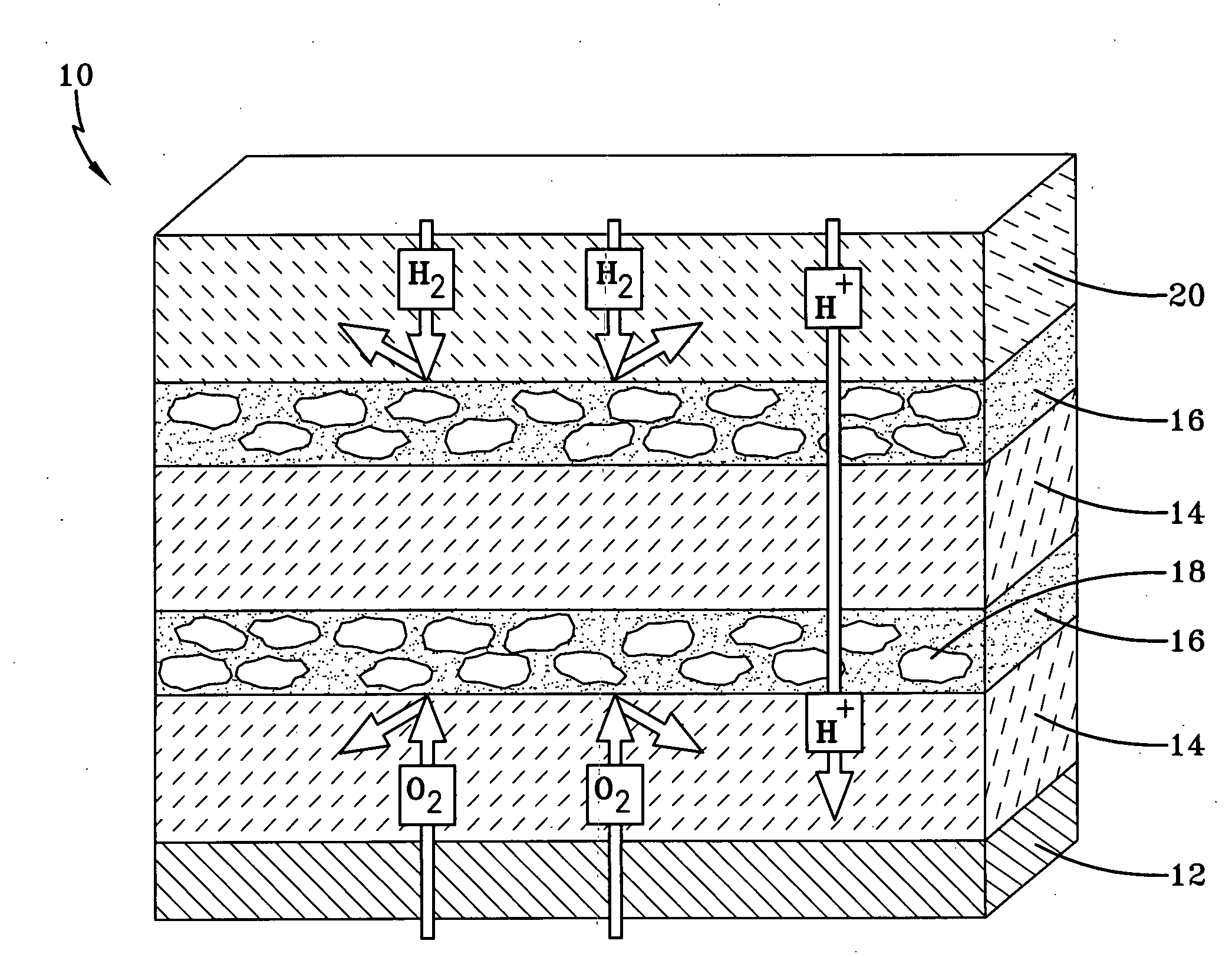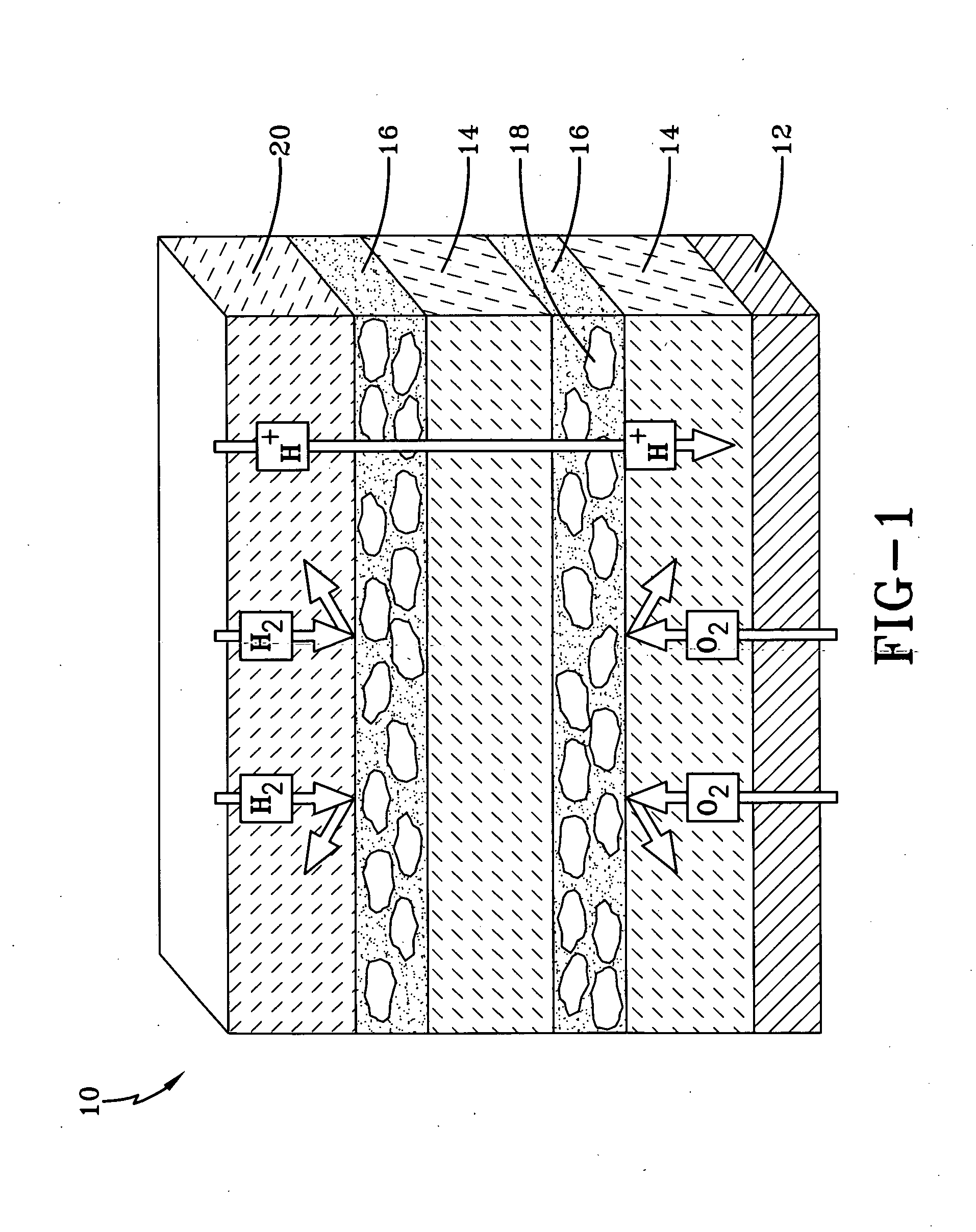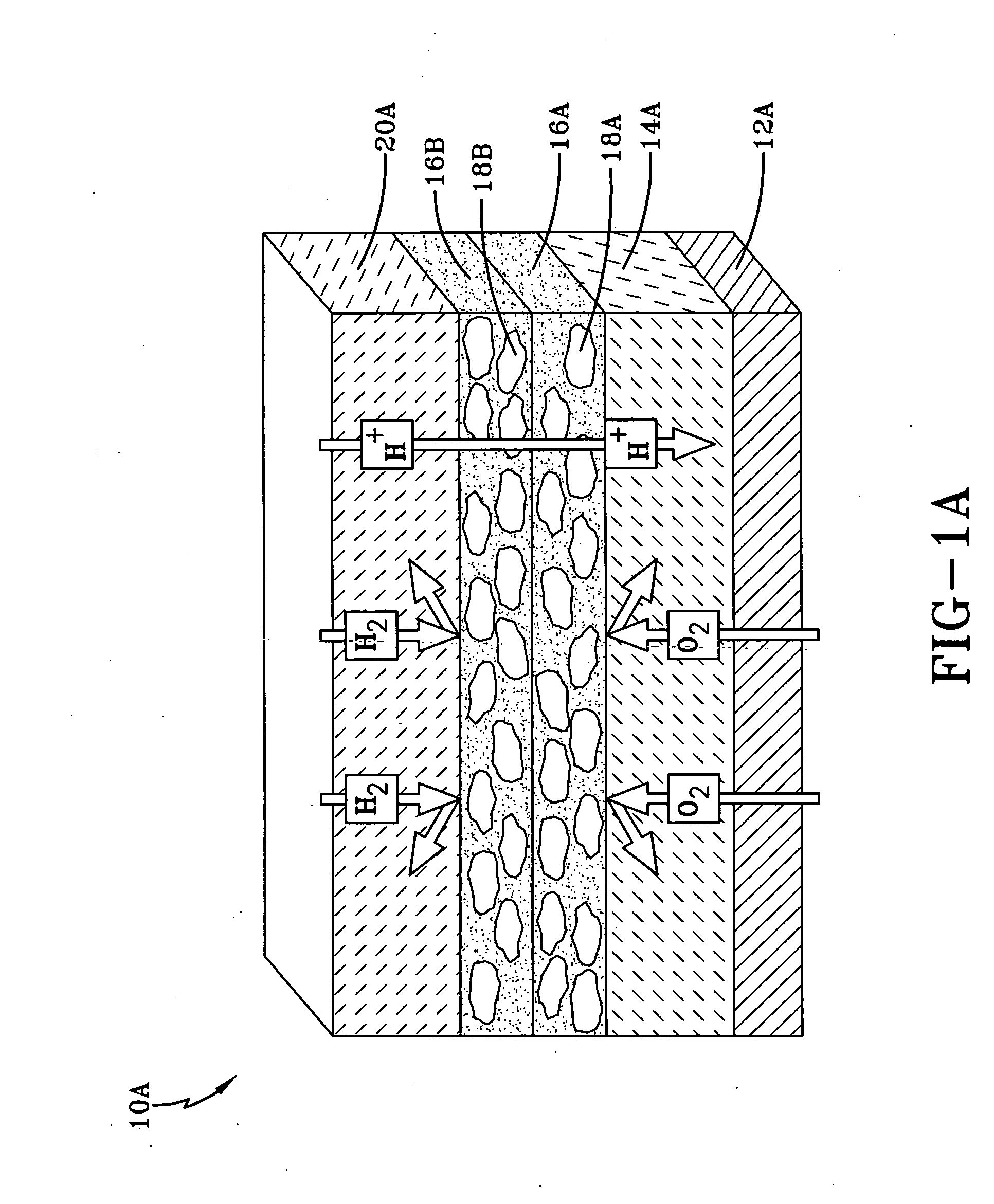Multilayered composite proton exchange membrane and a process for manufacturing the same
a proton exchange membrane and composite technology, applied in the direction of sustainable manufacturing/processing, final product manufacturing, electrochemical generators, etc., can solve the problems of membrane pores collapse, conductivity drop of perfluorosulfonic acid, pem fuel cell commercialization and use, etc., to improve mechanical strength, increase durability, and reduce the overall production cost of an mea
- Summary
- Abstract
- Description
- Claims
- Application Information
AI Technical Summary
Benefits of technology
Problems solved by technology
Method used
Image
Examples
examples
Enhancements Resulting from Layering
[0070]Tensile Strength: Laboratory tests on single layered NAFION® dry films indicate that increases in the concentration of hydrophilic nanoparticles decreases the tensile strength of the NAFION® films. However, multiple layers of nano-filled NAFION® membranes showed comparable tensile strength of the NAFION® films at increasing concentrations of nanoparticles.
TABLE 1Tensile strength in N / mm21 layer dry2 layers dryTensile strengthTensile strengthUndoped NAFION ®24222.0% ZrSPP22205.0% ZrSPP172310.0% ZrSPP2023
[0071]Tensile Strength: Table 2 indicates that layered films containing a middle layer of hydrophilic nanoparticles in NAFION® showed comparable or a very slight increase in tensile strength.
TABLE 2N / mm2NAFION ®-lab cast (2 layers)20.2NAFION ® / ZrSPP / NAFION ® (3 layers)20.3NAFION ® / zr / / NAFION ® / zr / NAFION ® (5 layers)21.3
[0072]Elastic Modulus: EM or Young's modulus describes tensile elasticity, or the tendency of an object to deform along an axi...
PUM
| Property | Measurement | Unit |
|---|---|---|
| thickness | aaaaa | aaaaa |
| thickness | aaaaa | aaaaa |
| total thickness | aaaaa | aaaaa |
Abstract
Description
Claims
Application Information
 Login to View More
Login to View More - R&D
- Intellectual Property
- Life Sciences
- Materials
- Tech Scout
- Unparalleled Data Quality
- Higher Quality Content
- 60% Fewer Hallucinations
Browse by: Latest US Patents, China's latest patents, Technical Efficacy Thesaurus, Application Domain, Technology Topic, Popular Technical Reports.
© 2025 PatSnap. All rights reserved.Legal|Privacy policy|Modern Slavery Act Transparency Statement|Sitemap|About US| Contact US: help@patsnap.com



